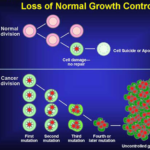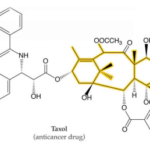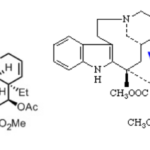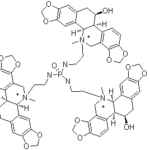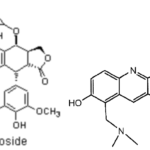J Med Discov (2017); 2(2):jmd17008; DOI:10.24262/jmd.2.2.17008; Received April 6th, Accepted April 18th, Published April 25th
Anticancer Effects of Chemotherapy and Nature Products
Shikha Rana1, Savita Dixit1,*, Alok Mittal1,*
1Department of Chemistry, Maulana Azad National Institute of Technology, Bhopal, India.
*Correspondence: Savita Dixit, Department of Chemistry, Maulana Azad National Institute of Technology, Bhopal, India. Email: Savitadixit1@yahoo.com OR Alok Mittal, Department of Chemistry, Maulana Azad National Institute of Technology, Bhopal, India.
Abstract
Cancer is an anomalous growth of cells which originates from a single abnormal cell.These cells then moves through the tissues, shift to various parts of the body and enhances the growth of new blood vessels thus acquiring nutrients. Cancerous cells can be evolved in body from any tissues.Various treatments are into force today but have serious side effects. These include surgery, radiation therapy, chemotherapy etc. Long back natural treatments were emphasized more. Also with the study of various side effects of various treatments scientists have shifted their interests towards herbs and plants. Vinca alkaloids, alkaloids in green tea, potatoes, eggplant, pomegranate, wheat grass etc have been studied for various results. Thus these can be a promising source for various leads beneficial in the formulation of anticancerous agents.
Keywords: Cancer, alkaloids, traditional methods, natural methods, herbs.
Introduction
The use of natural products with curative properties is as archaic as human civilization and since long mineral; plant and animal products have always been the main sources of drugs.With the advances and augmentation of organic chemistry synthetic compounds are preferred more for pharmacological treatments as pure compounds can easily be gathered and can be conveniently modified structurally so that active and potent lead can be developed. Also these methods are cost-effective.
“Cancer” can be said to be a general term that can be attributed to over 100 distinct diseases which affects various tissues and cell types. However,all forms of cancer are symbolized by anomalous cellgrowth which results from a comparatively small number of rooted or environmentally-induced genetic anomalies [1]. Understanding the mechanism of carcinogenesis can provide us with essential routes foe cancer prevention. Most of the researches are based on the multistage carcinogenesis notion i.e initiation→promotion→progression. Thus cancer chemoprevention can be interpreted as the usage of natural and synthetic chemical agents which can reverse or quench carcinogenesis so as to avert the advancement of nosy cancer.
In recent years, natural products especially those derived from natural plants are considered for alternative therapies [2].India is a prosperous source of medicinal plants and various systems of medicine such as ayurveda, unani and siddha utilize these plants and their extracts to cure or prevent various diseases. Many natural products such as flavonoids, terpenoids, and alkaloids have been extracted and have been exploited for various ailments due to their pharmacological diversity [3].
With the exploration of several protein/peptide receptors and tumor-related peptides and proteins may emerge as a “new wave” for impressive and discriminatory anticancer drugs snatching the largest share in cancer therapeutic market [4]. Plants are the wealthy sources of peptides with probable anticancer properties. Peptides from various plants possess different chemical structures and pharmacological actions thus these can be altered and can be considered for designing a lead compound. Till date only few plant derived peptides been considered for studying various anticancer mechanisms. Therefore plant peptides can be explored more for anticancer activities [5].
Cancer and cancer treatment
Cancer is an anomalous growth of cells which has been derived from a sole abnormal cell. The cells at this stage lose its natural control mechanism and thus expand. These cells then breach contiguous tissues, drift to obscure parts of the body and boost the growth of new blood vessels from which these cells acquire nutrients. Cancerous cells can be evolved in body from any tissues [6].
Cancerous tissues can be those of the blood and it can also be blood forming tissues. These include leukemias and lymphomas and solid tumors which are generally termed as cancer.These can be carcinomas or sarcomas.
Blood forming cells form Leukemia. These cells can accumulate in the bone marrow and blood stream. The cancerous cell from lymphomas produces large masses in armpit,groin,abdomen or chest due to expansion of lymph nodes (Fig. 1). The cancer cells of the lining of skin, lungs digestive tract and internal organs cause carcinomas. Cancer of skin, lungs, colon, stomach, breasts, prostate and thyroid gland are its examples. The mesodermal cells, which are responsible for muscles, blood vessels, bone and connective tissues, cancer is termed as sarcomas. Leiomyosarcoma and osteosarcoma are its example [7].
Figure 1. Leukemia development
Causes of Cancer
Bulk of the cancers is mainly caused due to various environmental factors and the rest are caused due to inherited genes [8]. Environmental factors include lifestyle, economic and behavioral factors. Various other factors such as usage of tobacco(causing 25-30% cancers), obesity (30-35% cancers), infections (15-20% cancers),radiations (causing upto 10 % cancers),stress, lack of physical activity and environmental pollution are some of the other prime factors responsible for cancer [9].
Traditional Treatments to cancers
Various treatments are followed today but with serious side effects. These treatments include surgery which is used in those cases in which the cancer is not spread in the body but is confined to a specific area.It is the most widely used method to diagnose, cure and prevent cancer. Chemotherapy or Chemo is the treatment of cancer with chemicals.When high energy particles or waves are used to wipe out the cancerous cells then this technique is called the radiation therapy. A newly developed therapy is in more use known as the targeted theory which includes the utilization of drugs to precisely attack the targeted cancerous cells which may sometime affect the normal cells too. This mode of therapy is known as the targeted therapy. When body’s immune system is stimulated to fight against cancerous cell smartly or when some external immune system components are provided such as proteins for active working of immune system so as to fight cancerous cells then such a technique is known as immunotherapy. Another important therapy used today is hyperthermia which is based on the idea that heat can be used to treat or kill cancer cells. In some therapies photosensitizing agents along with light are used to kill cancer cells. These agents are activated only when light is incident on it. Lasers are also being employed to treat these cancerous cells [10].
Major side-effects of the treatments
The abiding side effects of cancer are known as late effects. These effects depend on the type of cancers. The cancer cells grow fast and fast growing cells are killed by chemotherapy. But as the drugs passes through various pathways it influences other normal cells and damaging their natural working. Chemotherapy and other targeted therapies may lead to reduction of white blood cells thus increasing the chances of infection. Also these may lead to the reduction of red blood cells resulting into anemia. This may lead to the reduction of oxygen carrying capacity of the cells making an individual tired and breathless. The blood platelet count also decreases. The major side effect of using the traditional treatment is Hair loss. If chemotherapy is used then the hair loss is seen all over the body but if radiotherapy is used then hair loss is experienced at the area of treatment. The hair may either get thin or may adrift permanently. Fatigue, sore throat, nausea, ulcers, loss of appetite, change in taste, constipation, diarrhea, change in skin color and various hormonal changes are other side effects which are observed during these treatments [11].
Small molecular drugs and natural products
Due to the detriment effects of the traditional therapies scientists are now moving towards the natural way for treating cancer with meager or no side effects. Classically natural products have been used religiously to treat various diseases and illness. Natural product chemistry techniques facilitated a vast multitude of bioactive secondary metabolites from which many of them have become present drug candidates [12]. The plant based drug discovery has led to the advancement of anticancer agents such as vincristine, vinblastine, etoposide, paclitaxel, camptothecin, topotecan and irinotecan. Also various fruits and vegetables can be used in anticancer therapy such as curcumin (turmeric), resveratrol (red grapes, peanuts and berries), genistein (soybean), diallyl sulfide (allium), S-allyl cysteine (allium), allicin (garlic), lycopene (tomato), capsaicin (red chilli), diosgenin (fenugreek), 6-gingerol (ginger), ellagic acid (pomegranate), ursolic acid (apple, pears, prunes), silymarin (milk thistle), anethol (anise, camphor, and fennel), catechins (green tea), eugenol (cloves), indole-3-carbinol (cruciferous vegetables), limonene (citrus fruits), beta carotene (carrots), and dietary fiber [13].Some naturally occurring drugs being used are vinca alkaloids (vincristine, vinblastine, vindesine, vinorelbine), taxanes (paclitaxel, docetaxel), podophyllotoxin and its derivative (etoposide, teniposide), camptothecin and its derivatives (topothecan, irinothecan), anthracyclines (doxorubicin, daunorubicin, epirubicin, idarubicin) and others [14,15].
Vinca alkaloid family is the most significant and is secluded from Catharanthus roseus [16]. Etoposide is another highly active compound which is used to treat testicular cancer, used in combination with bleomycin and cisplatin [17].It is derived from Podophyllum peltatum[18] .It also shows remarkable exercise towards small cell lung carcinoma [19,20,21].Parsley, celery, chamomile consists of a flavone apigenin which demonstrates cytotoxic activities against breast cancer linings [22]. Saffron obtained from Saffron crocus flower is listed as potent agent for novel anticancer drug [23]. Its ethanolic extracts are being studied for human lung cancer, pancreatic cancer linings, skin carcinoma,colorectal cancer cells and breast cancer [24].Epigallocatechin gallate are most copious catechin compounds found in green tea,evidences show that they’re beneficial in treating brain,prostate,cervical and bladder cancers. Yang et al reviewed tea and cancer prevention on molecular mechanisms, molecular targets and human relevance of tea constituents [25,26,27] . Similarly various alkaloids, flavonoids and terpenoids are isolated and studied for cancer. Many herbs, dietary sources, medicinal plants, micro organisms are studied for the same.
Glycoalkaloids, found in eggplants, potatoes and tomatoes, and its hydrolysis derivatives inhibit growth of cells in culture and inhibits tumor growth [28]. Taxol from Taxus brevifolia is found be effective in arresting the cell cycle (Fig. 2). Its active substances are being tested for application against breast and ovarian cancer [29].
Alkaloids from Catharanthus roseus or Vinca roseac (vincrstine and vinblastine)are also found efficient inbreast cancer treatment (Fig. 3) [31].
Fig 2. Molecular diagram of Taxol
Fig 3. Molecular diagram of Vinblastine and Vincristine
V. amygdalina extracts was also found to inhibit proliferation of breast cancer [31]. Saraca indica bark extract(SIE) has been studied and is found to have antioxidant and antibreast cancer activity [32,55]. Taxol has been found to be the most outstanding compound for the treatment of refractory ovarian, breast and other cancers. Jatropha curcas, Pyrenacantha staudtii, Picralima nitida and Jatropha gossypifolia are the plants which have been found useful in the treatment of various cancers. Specially for the treatment of breast cancer [33]. Ukrain is an anticancer drug based on the extract of the plant Chelidonium majus L and is studied widely for treating various cancer including breast cancer (Fig. 4) [30].
Saraca indica belonging to family Caesalpiniaceae is the most ancient plant exhibiting various pharmacological effects such as Antioxidant, antibreast cancer activity etc [32]. Trigonella foenum in graecum (Fenugreek) are found to have anti-cancerous properties but the mechanism is yet to be elucidated [34,35]. Some tea and herbal infusions are found to be effective against treatment and prevention of cancer [36].
Fig 4. Molecular diagram of Ukrain
Antiproliferative properties ofMelissa officinalis were investigated and is shown that its extracts are potential anti breast cancer agents [37].
Juglans regia L. (Juglandaceae) has medicinal applications to treat a wide range of diseases such as cancer. Its chloroform fraction induces cell cycle arrest [38]. Three new dimeric indole alkaloids together with five known ones were isolated from the whole plants of Catharanthus roseus. All these compounds were evaluated for their in vitro cytotoxic activities against human breast cancer cell line MDA-MB-231 (Fig. 5) [39].
Fig 5. Molecular diagram of Etoposide and Topotecan
Ocimum tenuiflorum is a holy basil which is found to have antimicrobial, antioxidant, antidiabetic, anticancerous activity [40]. Ocimum tenuiflorum leaf powder also serves as a potent anticancerous agent[41]. Beta Vulgaris consists of chemical constituents suchas Carotenoids. Glycine Betaine, Saponins, Betacyanines, Folates, Betanin, Polyphenols, Flavonoids due to which it shows various pharmalogical activities such as antimicrobial activity, antiviral activity, antioxidant and specially it inhibits cancer [42].
Beetroot consists of betacyanins ,which imparts red colour, whose structure resembles doxorubicin (an anti cancer drug [42] .
Traditional use of beetroot for antitumor, carminative, emmenagogue, and hemostatic properties, clinical trials are lacking to substantiate these claims [43]. Wheat Grass is a potent anticancer agent. Its various extracts are found to be pharmaceutic especially for cancer. But further studies are required to validate its pharmacological activities [44, 45]. Pomegtanate shows marked effects in treating cancer such as prostate, Breast , colon and skin cancer [46,47,48].Indian gooseberry is very effective against ovarian cancer liver cancer cells and breast cancer [49]. Various chemical constituents present in curry leaves are ,Catechin, Epicatechin, Rutin, Naringin, Myricetin, Quercetin , Gallic Acid, Cinnamic Acid, Ferulic acid, Vanillic acid. Due to the presence of these chemical constituents these serve as an extremely potent agents for treating cancer especially breast cancer [50] .
Future Scope
Cancers in general can be treated by surgery or radiation therapy or chemotherapy [51].The utilization of conventional chemotherapeutic agents which target the cancerous cells dividing rapidly are coupled with adverse side effects [52].Cancer cells may also become resistant to chemotherapeutic drugs as of cellular changes such as increase in drug detoxifying enzymes and drug transporters, modified competence between drug and its target etc. The development of a novel class of anticancer drugs that lack lethal effects of traditional chemotherapeutic agents which remains non influential to common chemoresistance would prove to be a major advance in cancer treatment [53]. Revelation of various proteins/peptide receptors and cancer related peptides and proteins are expected to spawn a new wave in near future which may confiscate a large area of the salutary market[54].
Conclusion
Various active agents which have been derived from nature have changed the conventional history of human cancer. Green plants synthesize a variety of bioactive compounds which can be attributable and can be used for scientific investigation.Natural products extracted from medicinal plants plays a vital role in generating leads for treatment of cancer.Various experimental agents have provided us an opportunity to figure out a new class of anticancer agents. Eventhough many studies are being carried out with alkaloids, flavonoids and terpenoids, still there are certain unexplored bioactive compounds which have anticancer properties with meagre side effects and maximum efficacy. Thus giving us an opportunity to explore more and find solutions to the unsolved questions.
Competing interests
The authors declare that they have no competing interests.
Acknowledgments
None.
References
1. S.M.K. Rates, Plants as source of drugs ,Elsevier,Toxicon 39 (2001) 603–613.
2. Marcy J. Balunas,A. Douglas Kinghorn ,Drug discovery from medicinal plants,Life Sciences 78 (2005) 431 – 441
3. M. Umadevi1, K.P.Sampath Kumar, Debjit Bhowmik, S. Duraivel,Traditionally Used Anticancer Herbs In India, Journal of Medicinal Plants Studies;2013,Volume: 1(3);(56-74) ISSN: 2320-3862
4. Prushin Thakore, Rupesh kumar Mani,Kavitha and Dr Jagdeesh Singh, A brief review of plants having anticancer properties,IJPRD,2011;Vol3(11);Jan 2012 (129-136).
5. Xudong Maa,b, Chunfu Wub, Wei Wanga, Xiaobo Li ;Peptides from Plants: A New Source for Antitumor Drug Research;Asian Journal of Traditional Medicines,(1-6).
6.http://www.merckmanuals.com/home/cancer/overview_of_cancer/overview_of_cancer.html
7.http://www.cancer.gov/cancertopics
8. Kravchenko J, Akushevich I, Manton, KG .Cancer mortality and morbidity patterns in the U. S. population: an interdisciplinary approach. Berlin: Springer(2009). ISBN 0-387-78192-7.
9. Anand P, Kunnumakkara AB, Kunnumakara AB, Sundaram C, Harikumar KB, Tharakan ST, Lai OS, Sung B, Aggarwal BB (September 2008).”Cancer is a preventable disease that requires major lifestyle changes”. Pharm. Res. 25 (9): 2097–116
10.http://www.cancer.net/survivorship/long-term-side-effects-cancer-treatment
11.Macmillan fact sheet 2013: Side effects of cancer treatment
12Daniel A. Dias 1, Sylvia Urban and Ute Roessner,.”A Historical Overview of Natural Products in Drug Discovery”Metabolites 2012, 2, 303-336; doi:10.3390/metabo2020303.
13.Abhishek Bhanot, Rohini Sharma, Malleshappa N. Noolvi,Natural sources as potential anti-cancer agents: A review,International Journal of Phytomedicine 3 (2011) 09-26.
14. Cragg GM, Kingston DGI, Newman DJ. Taylor & Francis Group, Boca Raton, FL. Brunner-Routledge Psychology Anticancer Agents from Natural Products.Press;2005.
15. Aggarwal BB, Shishodia SMolecular targets of dietary agents for prevention and therapy of cancer.BiochemPharmacol. 2006;71:1397–1421.
16.Noble RL: The discovery of the vinca alkaloids – chemotherapeutic agents against cancer.Biochem Cell Biol1990, 68:1344-1351.
17.. Williams SD, Birch R, Einhorn LH, Irwin L, Greco FA, Loehrer PJ: Treatment of disseminated germ-cell tumors with cisplatin, bleomycin, and either vinblastine or etoposide.New Engl J Med1987, 316:1435-1440.
18. Stähelin H: Actvity of a new glycosidic lignan derivative (VP-16-213) related to podophyllotoxin in experimental tumors.Eur J Cancer 1973, 9:215-221.
19. Chabner BA: Edited by DeVita VT Jr, Hellman S, Rosenberg AS. Philadelphia: Anticancer drugs. In Cancer: Principles and Practice,edn 4. Lippincott;1991:325-417.
20.Baltimore: Williams &Wilkins; The chemotherapy sourcebook. Perry MC (Ed):1992.
21. Harvey AL: from nature: are natural products still relevant Trends Pharmacol Sci 1999, 20:196-198.
22.Hu Wanga, Tin Oo Khorb, Limin Shub, Zhengyuen Sub, Francisco Fuentesb, Jong-Hun Leeb, and Ah-Ng Tony Kong,Plants Against Cancer: A Review on Natural Phytochemicals in Preventing and Treating Cancers and Their DruggabilityAnticancer Agents Med Chem. 2012 December ; 12(10): 1281–1305.
23.Gutheil WG, Reed G, Ray A, DharCrocetin: an Agent Derived from Saffron for Prevention and Therapy for Cancer. A Curr Pharm Biotechnol. 2011
24. Chryssanthi DG, Dedes PG, Karamanos NK, Cordopatis P, Lamari FN Crocetin inhibits invasiveness of MDA-MB-231 breast cancer cells via downregulation of matrix metalloproteinases. Planta Med.2011; 77(2):146–151. [PubMed: 20803418]
25. Yang CS, Lambert JD, Ju J, Lu G, Sang S,Tea and cancer prevention: molecular mechanisms and human relevance. Toxicol Appl Pharmacol. 2007; 224(3):265–273. [PubMed: 17234229]
26.Yang CS, Lambert JD, Hou Z, Ju J, Lu G, Hao X. Molecular targets for the cancer preventive activity of tea polyphenols. Mol Carcinog.2006; 45(6):431–435. [PubMed: 16652355]
27.Friedman M, Chemistry and Anticarcinogenic Mechanisms of Glycoalkaloids Produced by Eggplants, Potatoes, and TomatoesPMID: 25821990.
28..Dmitri O. Levitsky and Valery M. Dembitsky. Anti-breast Cancer Agents Derived from PlantsNat ProdBioprospect. 2015 Feb; 5(1).
29..Mukherjee AK, Sarkar N, Ghosh AC. Advances in cancer therapy with plant based natural products.Curr Med Chem. 2001 Oct;8(12):1467-86.
30.E Ernst and K Schmidt .Ukrain – a new cancer cure? A systematic review of randomised clinical trials
31. Engel N, Falodun A, Kühn J. BMC Pro-apoptotic and anti-adhesive effects of four African plant extracts on the breast cancer cell line MCF-7.Complement Altern Med. 2014 Sep 9;14:334. doi: 10.1186/1472-6882-14-334.
32. Yadav NK et.al Saraca indica Bark Extract Shows In Vitro Antioxidant, Antibreast Cancer Activity and Does Not Exhibit Toxicological Effects. Oxid Med Cell Longev. 2015;2015:205360. Epub 2015 Mar 16.
33. Mantle D, Lennard TW, Pickering AT,Therapeutic applications of medicinal plants in the treatment of breast cancer: a review of their pharmacology, efficacy and toleratbiliy.Adverse Drug React Toxicol Rev. 2000 Aug; 19(3):223-40.
34. Alshatwi AA, Shafi G, Hasan TN, Syed NA, Khoja KK. Fenugreek induced apoptosis in breast cancer MCF-7 cells mediated independently by fas receptor change.Asian Pac J Cancer Prev. 2013;14(10):5783-8.
35. Alshatwi AA, Shafi G, Hasan TN, Syed NA, Khoja KK. Fenugreek induced apoptosis in breast cancer MCF-7 cells mediated independently by fas receptor change.Asian Pac J Cancer Prev. 2013;14(10):5783-8
36. Li F, Li S, Li HB, Deng GF, Ling WH, Xu XR.Antiproliferative activities of tea and herbal infusions.Food Funct. 2013 Apr 25;4(4):530-8. doi: 10.1039/c2fo30252g. Epub 2013 Jan 10.
37.. Saraydin SU1, Tuncer E, Tepe B, Karadayi S, Özer H, Şen M, Karadayi K, Inan D, Elagöz Ş, Polat Z, Duman M, Turan M.Antitumoral effects of Melissa officinalis on breast cancer in vitro and in vivoAsian Pac J Cancer Prev. 2012;13(6):2765-70.
38. Salimi M, Majd A, Sepahdar Z, Azadmanesh K, Irian S, Ardestaniyan MH, Hedayati MH, Rastkari N. Cytotoxicity effects of various Juglans regia (walnut) leaf extracts in human cancer cell lines. Pharm Biol. 2012 Nov;50(11):1416-22. doi: 10.3109/13880209.2012.682118. Epub 2012 Sept 11.
39. Wang CH, Wang GC, Wang Y, Zhang XQ, Huang XJ, Zhang DM, Chen MF, Ye WC.Cytotoxic dimeric indole alkaloids from Catharanthus roseus.Fitoterapia. 2012 Jun;83(4):765-9. doi: 10.1016/j.fitote.2012.03.007. Epub 2012 Mar 13.
40. Palla Ravi et.al.A Review of Krishna Tulsi. Review article – irjap.net.
41. Nangia-MakkerP, Raz T, Tait L, Shekhar MP, Li H, Balan V, Makker H, Fridman R, Maddipati K, Raz A. Ocimum gratissimum retards breast cancer growth and progression and is a natural inhibitor of matrix metalloproteases.Cancer Biol Ther. 2013 May;14(5):417-27. doi: 10.4161/cbt.23762. Epub 2013 Feb 4.
42. Bhupinder Singh and Bahadur Singh Hathan.Chemical composition functional properties and processing of Beetroot- A Review. International Journal Of Scientific and Engg. Research. Vol 5 Issue I,Jan 2014.
43. http://www.drugs.com/npp/beetroot.html
44. Shirude Anup Ashok. Phytochemical and pharmacological Screening of Wheat grass Juice.International Journal Of Pharmaceutical sciences review and Research.
45.. M Chouhan.A pilot study on wheat grass juice for its phytochemical, nutritional and therapeutic potential in chronic diseases. International Journal of Chemical Sciences.
46. Ismail.et .al . Pomegranate peel and fruit extracts : a review of potential anti inflammatory and anti infective effects.(Pubmed).
47. Arzu Akpinar –Bayizit et.al .The Therapeutic potential of pomegranate and its product for prevention of cancer. Intech.
48. Shariff Moghadassi Md et.al . Chemical Composition of the plant Punica granatum L. and its effect on heart and cancer.Journal of Medicinal Plants research.
49. Teijun Zhao et.al. Anticancer properties of Phyllanthus emblica .Hindwai Publishing Corporation Oxidative Medicine and cellular longetivity. Article ID 950890
50. Ghasemzadeh A. et.al. Evaluation of Bioactive compounds, Pharmaceutical qualityand anticancer activity of Curry Leaves. Pubmed.
51. E. Espinosa, P. Zamora, J. Feliu, m. Gonzalez Baron, Classification of anticancer drugs—A new system based on therapeutic targets,Cancer Treat. Rev. 29 (2003) 515–523.
52. G.N. Naumov, J.L. Townson, I.C. MacDonald, S.M. Wilson, V.H. Bramwell, A.C. Groom, A.F. Chambers Ineffectiveness of doxorubicin treatment on solitary dormant mammary carcinoma cells or latedeveloping metastases,Breast Cancer Res. Treat. 82 (2003) 199–206.
53. David W. Hoskin , Ayyalusamy Ramamoorthy,Studies on anticancer activities of antimicrobial peptides.Biochimica et Biophysica Acta 1778 (2008) 357–375.
54.Jyothi Thundimadathil ,Hindawi Publishing Corporation ,Cancer Treatment Using Peptides: Current Therapies and Future ProspectsJournal of Amino Acids Volume 2012, Article ID 967347, 13 pages doi:10.1155/2012/967347.
55.. Omer A, Sharma C, Gayen JR, Singh P, Arya KR, Singh RK.et.al .Saraca indica Bark Extract Shows In Vitro Antioxidant, Antibreast Cancer Activity and Does Not Exhibit Toxicological EffectsPMID: 25861411
Copyright
© This work is licensed under a Creative Commons Attribution 4.0 International License. The images or other third party material in this article are included in the article’s Creative Commons license, unless indicated otherwise in the credit line; if the material is not included under the Creative Commons license, users will need to obtain permission from the license holder to reproduce the material. To view a copy of this license, visit http://creativecommons.org/licenses/by/4.0/


